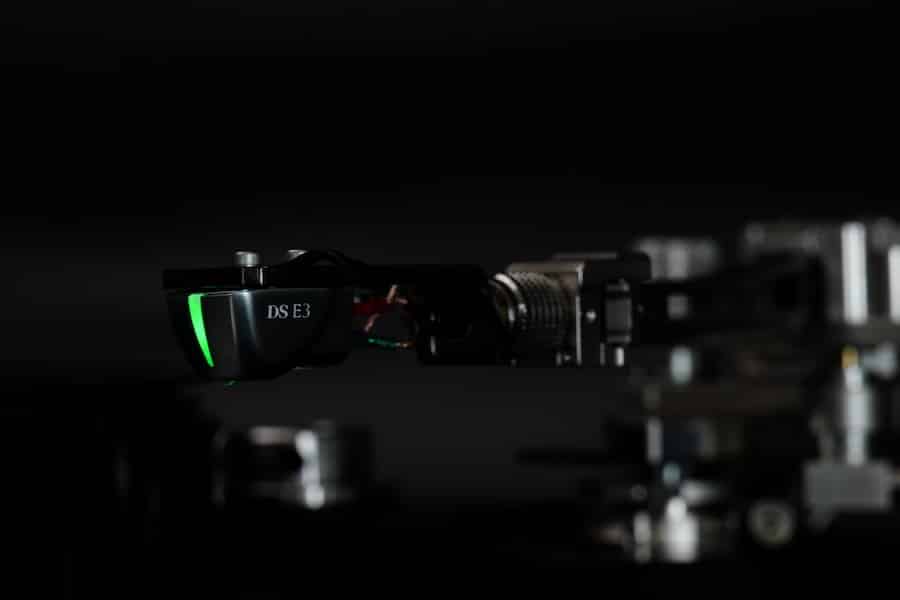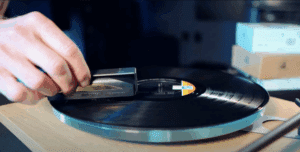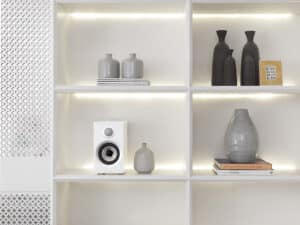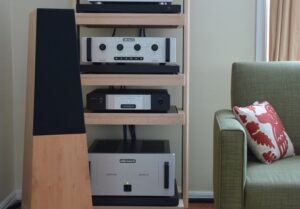Optical Phono Cartridges: The Ultimate Analog Listening Experience
And Yes, They’re Still Analog—Not Digital
Let’s get this out of the way: optical phono cartridges are not digital.
We know—when you hear the word “optical,” you probably think of fiber optic cables, CD players, or that glowing red port on the back of your old TV. And yes, those are all ways digital audio has been transmitted. But the assumption that “optical = digital” has been one of the biggest mental hurdles for vinyl lovers to get over.
Here’s the truth: DS Audio’s optical cartridges use light, but they’re still 100 percent analog. In fact, the idea predates the digital era. Engineers were experimenting with optical designs back in the 1960s and ‘70s. It just wasn’t practical until modern LEDs and photodetectors came along.
Now that the tech has caught up, this is the closest thing we’ve got to a “perfect” cartridge.
A Better Approach to Cartridges
If you’ve hung around the vinyl world, you know the two classics: moving magnet (MM) and moving coil (MC). MM is the standard: inexpensive (usually), reliable, but not super detailed. MC is lighter, more precise, but outputs a much weaker signal. That weak output means your phono stage has to crank up the gain, and with it, noise.
Optical phono cartridges skip that mess. Instead of dragging magnets and coils around, they use an LED and a photo detector. The stylus moves a beryllium shade inside the cartridge which casts a tiny shadow onto a photoreceptor, and voilà, you’ve got a clean signal.
With almost no mass weighing it down, the stylus traces the grooves with surgical precision. Translation: more detail, less distortion.
Less Gain, Less Pain
Here’s where things get interesting: DS Audio’s optical cartridges deliver about 10 times the power output of a moving magnet cartridge. That means you don’t need absurd amounts of gain to hear your music. And since every bit of gain adds hiss, hum, and junk you don’t want, this is a big win.
Think of it like Goldilocks: MM is too heavy, MC is too weak, and optical? It’s just right.
Ditching the Magnet Problem
Here’s a nerdy detail that matters: in MM and MC cartridges, magnets and coils don’t just generate signal. They also create magnetic forces on the needle itself. That magnetic resistance (aka hysteresis) isn’t linear, and it ever-so-slightly distorts playback. By removing magnets entirely, optical cartridges dodge that problem and give you a cleaner, truer response with less need for corrective equalization.
Enter DS Audio
Right now, DS Audio is currently the only company making optical phono cartridges, and they’re crushing it. Fun fact: the founder’s father helped invent the optical computer mouse with Microsoft. That curiosity about light-based tech evolved into the optical cartridge we know today.
Instead of stacking on 70 dB of gain like a moving coil, DS Audio’s designs need only about 13 dB. You will need their special Equalizer/Energizer box, but that’s not a downside. It’s the key that unlocks the magic. And more and more manufacturers are starting to integrate support for this tech, which tells you it’s here to stay.
Where to Start: DS Audio Models
If you’re curious, the entry point is the DS Audio DS-E3 at around $3,000 (cartridge and Equalizer included). That might sound steep, but trust us: dollar for dollar, you can’t find another cartridge that will outperform this. The leap in sound quality compared to similarly priced MM or MC cartridges is jaw-dropping.
And good news: you don’t have to buy a new Equalizer every time you upgrade. All DS Audio cartridges work with all DS Audio Equalizers. That means you can start with the E3 and climb the ladder later without re-buying the “box.”
Hear It for Yourself at HiFi BUys
We’ll go ahead and say it: optical phono cartridges are a physically better technology. Customers often describe them as “like listening to the master tape.” The only time people don’t pick optical? At the ultra-high end, where everything already sounds as close to perfect as possible, or if they simply don’t have space for one more component (the DS Audio Equalizer).
Otherwise, there’s no contest.
Want to know what your favorite records really sound like? Come visit us at HiFi Buys in Atlanta. Bring your vinyl, compare cartridges, and experience optical for yourself.





